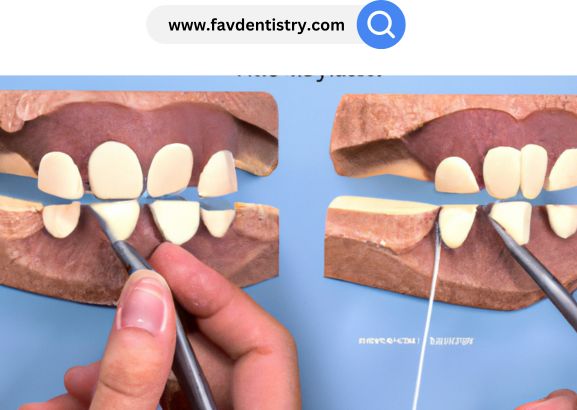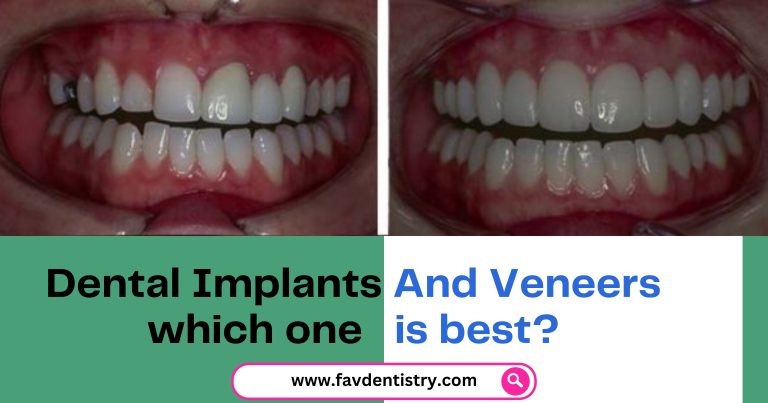Last Updated on 5 days by DR. ALBIN SIPES
Dental veneers are one of the most popular cosmetic dental procedures. They are also one of the most misunderstood. Many people think that dental veneers are just a thin layer of porcelain that is glued to the front of your teeth.
In reality, they are much more than that. Dental veneers are fragile shells of porcelain that are custom-made to fit over your existing teeth. The porcelain used for dental veneers is solid and durable, and it is also very natural-looking.
Your dentist will take an impression of your teeth in order to make sure that the dental veneers fit perfectly.
Dental veneers are one of the most popular cosmetic dental procedures. They are also one of the most misunderstood. Many people think that veneers are glued onto the front of your teeth, but there is actually a precise process that must be followed in order to ensure that they look natural and last for many years.
Here is a brief overview of how dental veneers are applied: The first step is to remove a small amount of enamel from the front surfaces of your teeth. This ensures that the veneers will lay flat and have a tight bond with your natural teeth.
Next, an impression or mold will be made on your teeth so that custom-made veneers can be created. Once your veneers are ready, they will be bonded to your natural teeth using a special adhesive. The final step is to polish and buff the veneers so that they blend in seamlessly with your smile!
Video Procedure of Applying Porcelain Dental Veneers at Cosmetic Dental Associates
Is It Painful to Apply Veneers?
When it comes to getting veneers, the pain factor is usually one of the first things that people want to know about. After all, no one wants to go through a painful dental procedure if they don’t have to! So, just how much pain can you expect when getting veneers?
The good news is that, in most cases, applying veneers is not a particularly painful experience. Of course, everyone’s pain threshold is different, so some people may find it more uncomfortable than others. However, in general, the process of having veneers applied is relatively pain-free.
There are a few potential sources of discomfort during the veneer application process. First of all, your dentist will need to prepare your teeth for the veneers by shaving off a small amount of enamel. This can sometimes cause a brief twinge of pain or sensitivity.
However, this sensation should only last for a minute or two and then subside completely. Once your teeth are prepared for the veneers, your dentist will then apply an adhesive to attach them in place. You may feel some pressure while this is happening, but again, it should not be overly painful or uncomfortable.
In fact, many people report feeling little to no discomfort at all during this stage of the procedure! Finally, once the adhesive has set and your veneers are in place permanently, you may feel some mild soreness in your mouth and teeth. This is perfectly normal and should dissipate within a day or two as your mouth adjusts to its new appearance.
Overall, though, getting veneers should not be a painful experience – so there’s no need to worry!
How are Veneers Attached to Teeth?
Veneers are attached to teeth using a special dental adhesive. The adhesive is applied to the back of the veneer, and then the veneer is placed on the tooth. The adhesive hardens and secures the veneer to the tooth.
How Long Time To Take Put Veneers on Teeth?
How long does it take to get veneers? The answer depends on several factors, including the type of veneer and the condition of your teeth.
Porcelain veneers generally take two to three weeks to be made in a dental laboratory. Your dentist will then need to prepare your teeth for the veneers and place them on your teeth. One visit is enough, but sometimes two visits are required.
If you have tooth decay or other damage to your teeth, your dentist may need to treat these problems before placing the veneers. This could add one or more additional visits to the process. In some cases, dental implants may be necessary before the placement of veneers.
In short, it usually takes around three weeks to a month to get porcelain veneers from start to finish. The exact timeline will depend on your situation and needs.

Do You Have to Drill Your Teeth for Veneers?
No, you do not have to drill your teeth for veneers. Veneers are used to improve the appearance of your smile and can be an alternative to crowns.
Veneers Teeth Pros And Cons
When it comes to getting veneers, there are a few things you need to consider. Veneers are a great way to improve the look of your smile, but they’re not suitable for everyone. Here’s a look at the pros and cons of veneers so you can decide if they’re right for you.
Pros: Veneers can give you a beautiful, natural-looking smile. They can be used to correct a wide variety of dental problems, including gaps, chips, and stains. It’s durable and has been for many years.
Cons: Veneers are not reversible, and once they’re placed, they cannot be removed.
This means that you need to be sure that you really want veneers before getting them placed. Veneers also require some special care; brushing too hard or using abrasive toothpaste can damage them. And finally, veneers can be expensive; depending on your insurance coverage, they may need to be fully covered.
Are Veneers Permanent
If you are considering getting veneers, you may be wondering if they are a permanent solution. The short answer is that veneers are not permanent, but they can last for many years with proper care.
They are used to improve the appearance of your smile and can correct problems such as gaps, chips, and stains. While veneers are not permanent, they are a long-lasting solution for most people. With proper care, veneers can last for 10-15 years or even longer.
It’s essential to practice good oral hygiene habits and avoid biting or chewing on complex objects To help extend the life of your veneers. You should also see your dentist regularly for checkups and cleanings. If you take care of your veneers, they will help you enjoy a beautiful smile for many years to come!
What are Veneers for Teeth
Veneers are made from thin pieces of porcelain or composite material that are bonded to the front surface of teeth. Veneers can be used to correct a variety of dental problems, including stained or discolored teeth, chipped or worn down teeth, and misshapen or crooked teeth.
Veneers are an excellent option for people who want to improve the aesthetics of their smile. They can give you a natural Procedure.
If you are considering veneers, it is essential to know what the veneer procedure entails. Veneers are thin pieces of porcelain that are booking and long-lasting results. If you are considering veneers, it is essential to consult with a qualified dentist to discuss your options and make sure they are right for you.
First, make an appointment with your dentist. During this appointment, your dentist will examine your teeth and ask about your goals for treatment. They will also take X-rays and impressions of your teeth in order to create a custom treatment plan for you.
Once you have decided to proceed with treatment, the next step is to have the veneers placed. This is typically done in two appointments. During the first appointment, your dentist will prepare your teeth for placement by removing a small amount of enamel from their surface.
This allows room for the veneer so that it does not protrude beyond the edge of your tooth. Once your teeth have been prepared, temporary veneers will be placed on them while permanent ones are being made in a dental lab. At your second appointment, which usually occurs within 1-2 weeks of the first one, the permanent veneers will be bonded to your teeth using a unique adhesive material.
Veneers Vs. Lumineers
There are many reasons why people might choose to get veneers or lumineers. Some people want to change the shape of their teeth, while others want to improve the color or appearance of their smile. Veneers and lumineers are two popular options for achieving these goals, but how do you know which one is right for you?
Veneers can be used to change the shape, size, and color of your teeth, and they are also effective at hiding imperfections such as chips, cracks, and gaps. Lumineers are similar to veneers in that they can be heavyset with an all-inclusive smile makeover. However, there are a few key differences.
Lumineers are made from a thinner material than veneers, so they require less preparation of the tooth before they can be applied.
Conclusion
Dental veneers are a popular cosmetic dentistry procedure. They are used to improve the appearance of your smile by changing the color, shape, size, or length of your teeth.
The dental veneer process usually requires two visits to the dentist. The first visit is for consultation and preparation, during which the dentist will take impressions of your teeth and choose the right shade for your veneers.
The second visit is for bonding and finalization, during which the veneers will be applied to your teeth using a unique adhesive.




